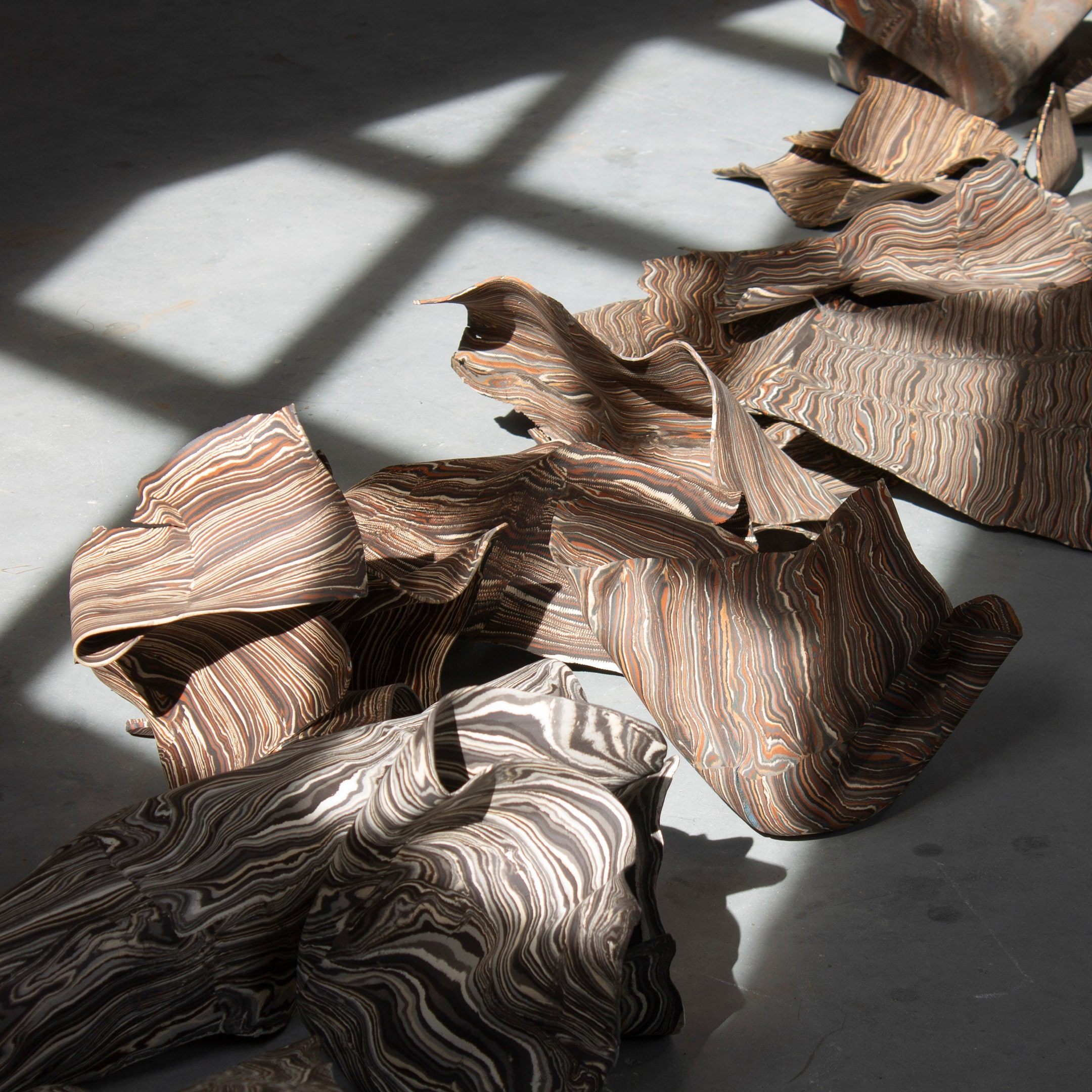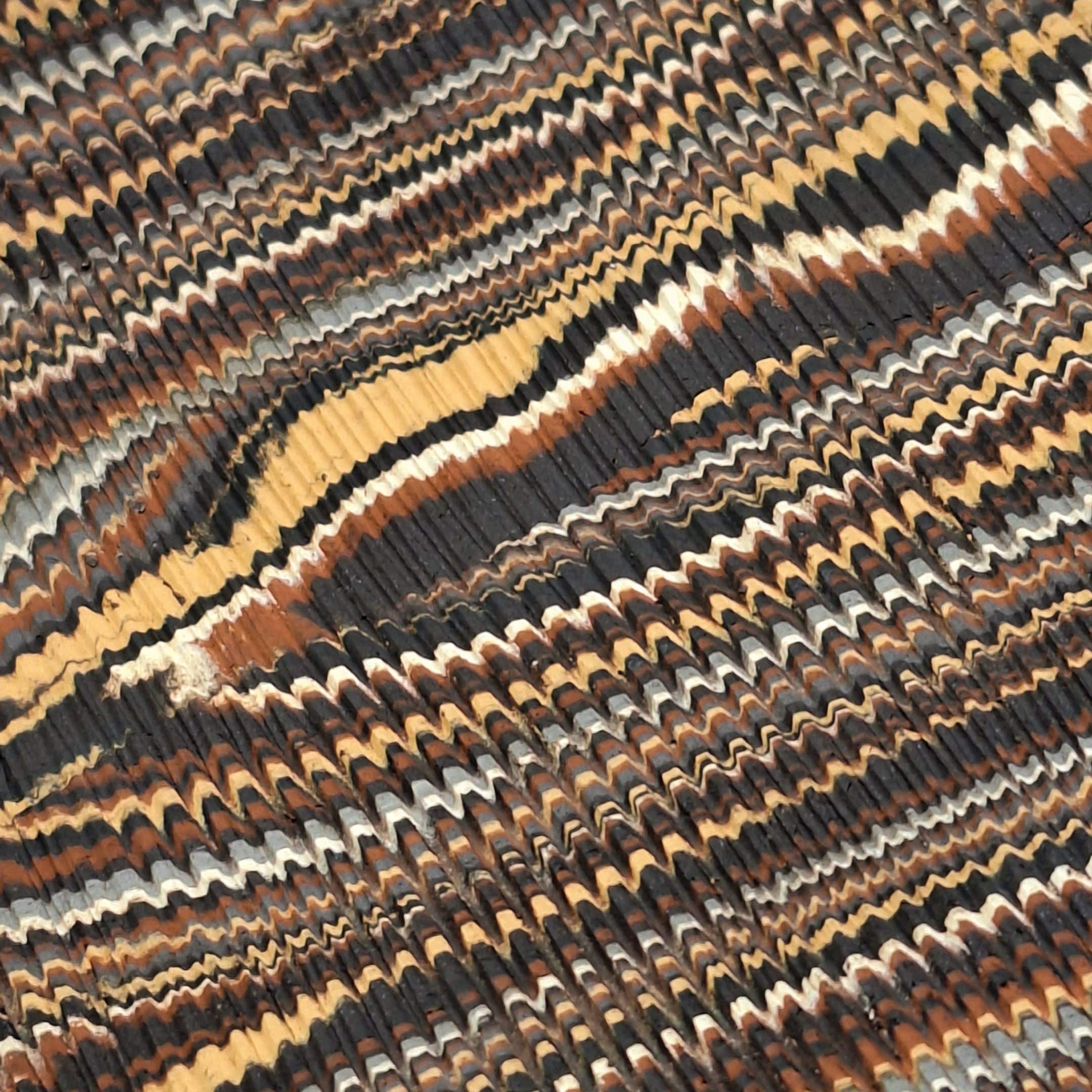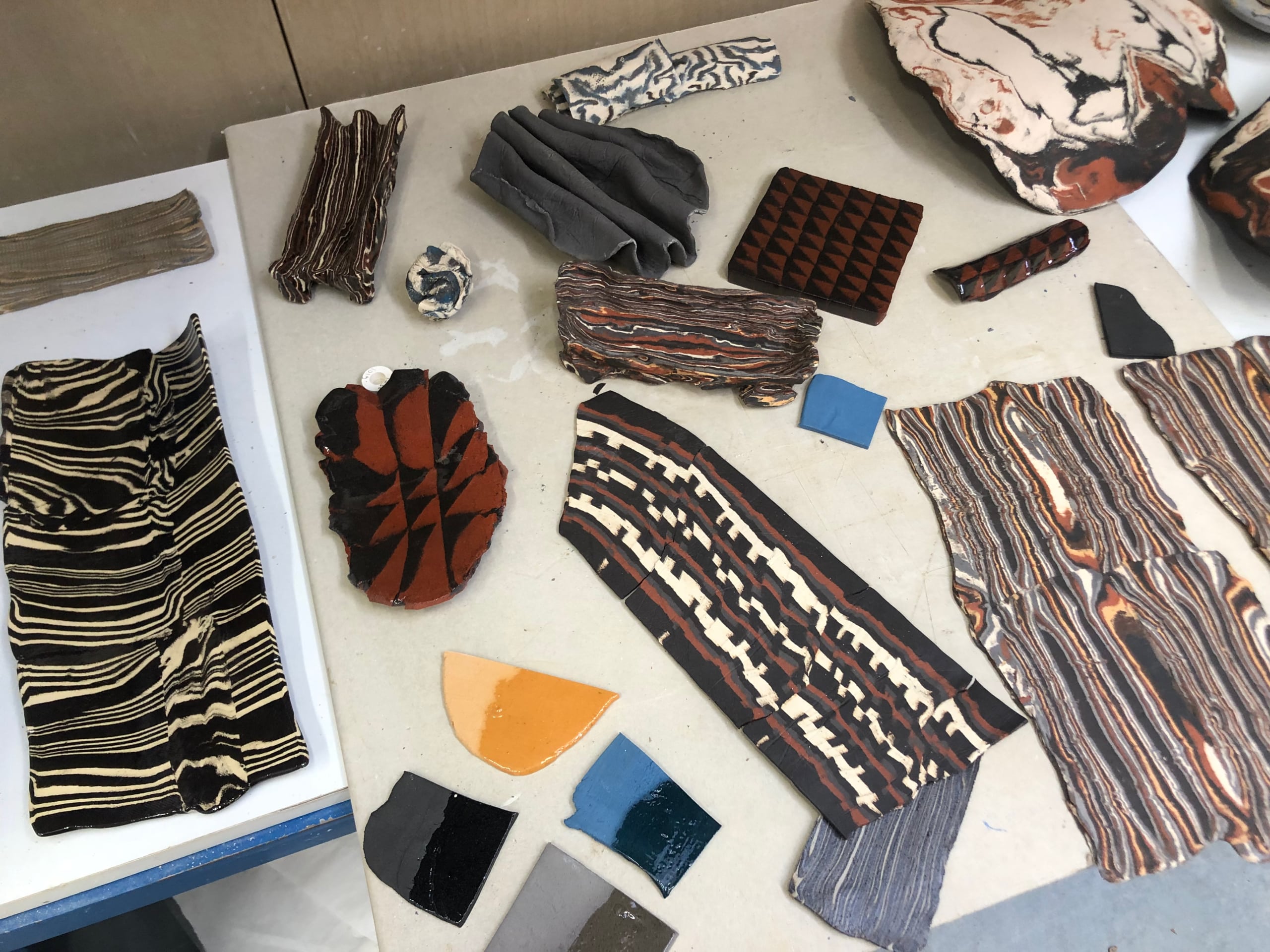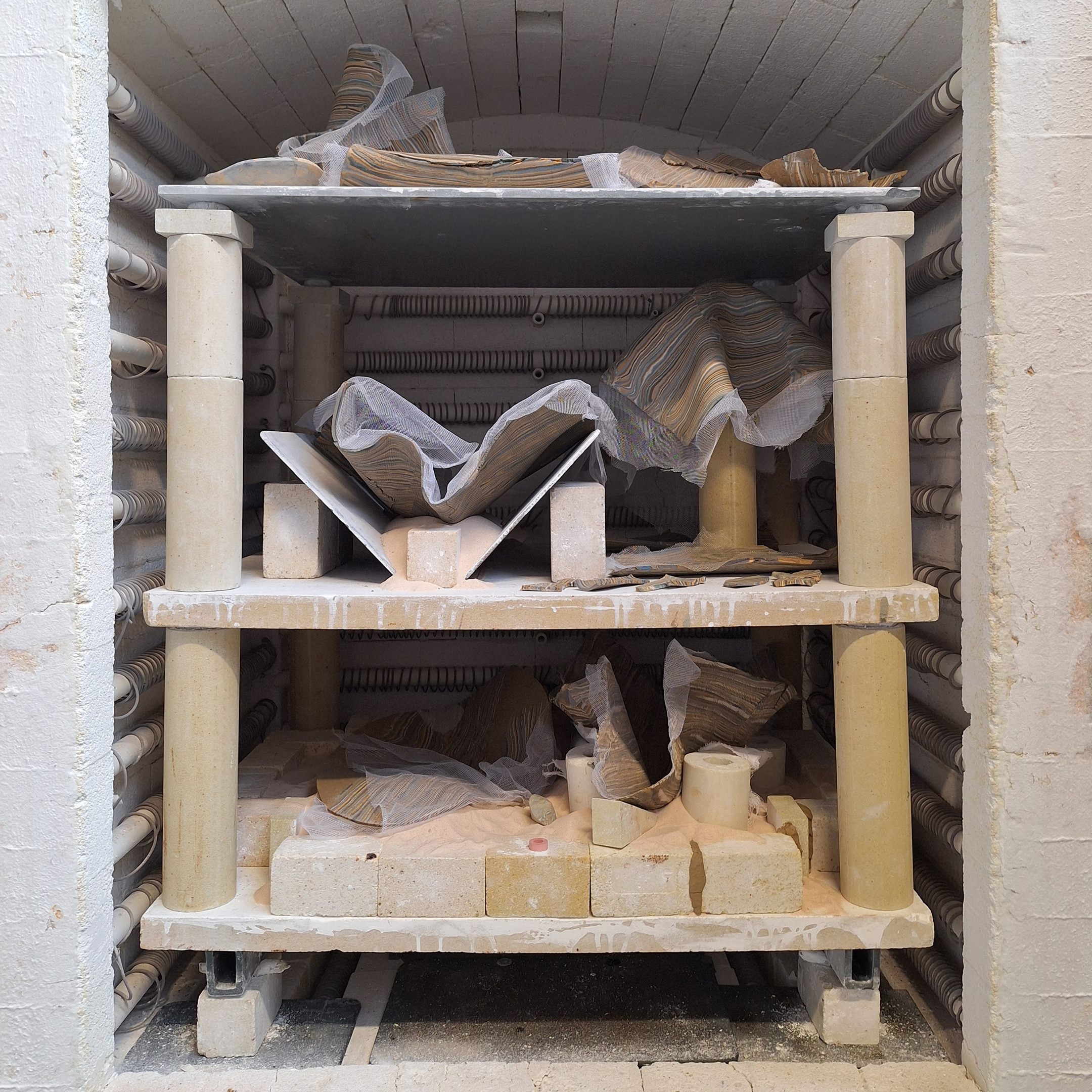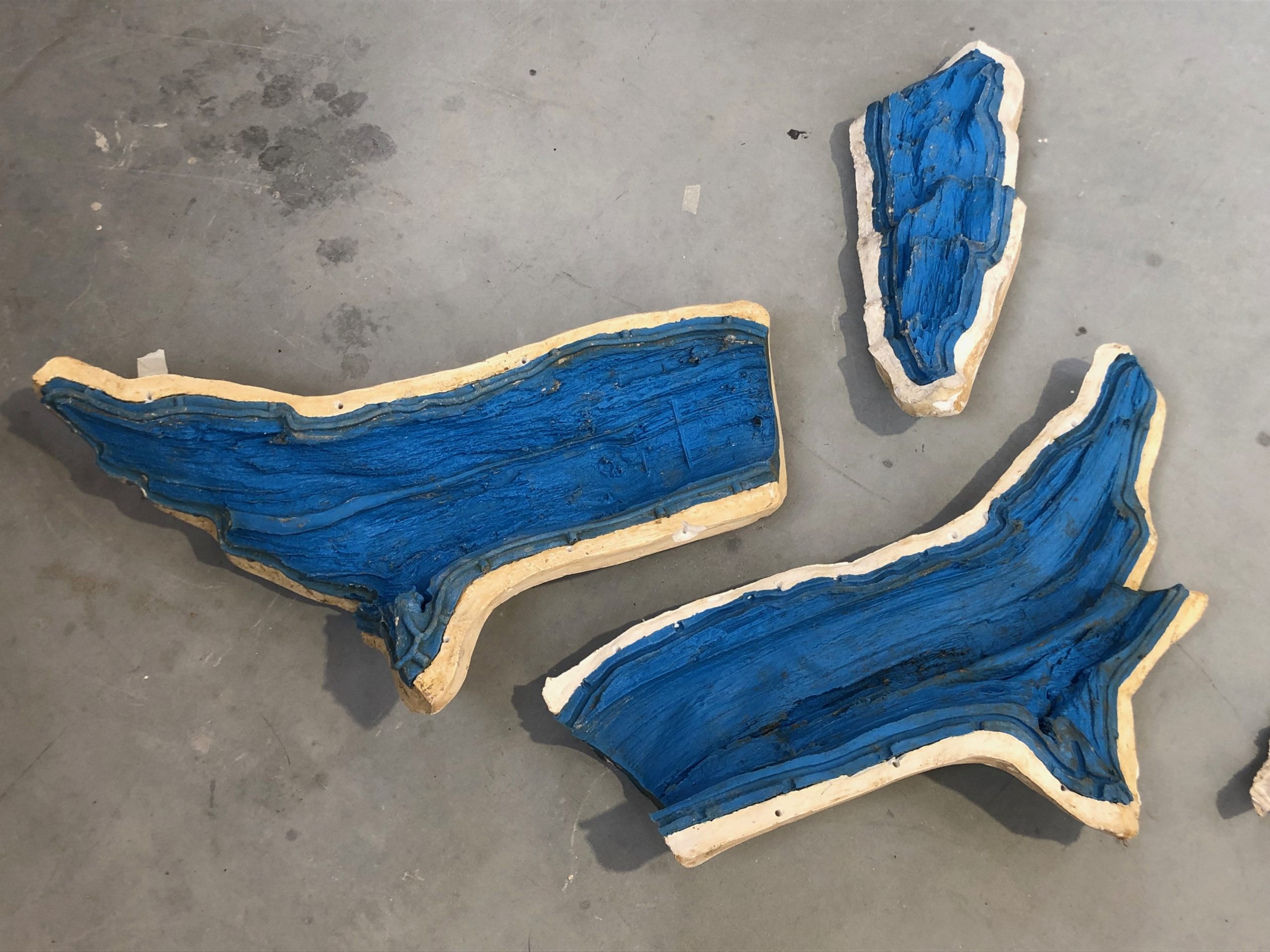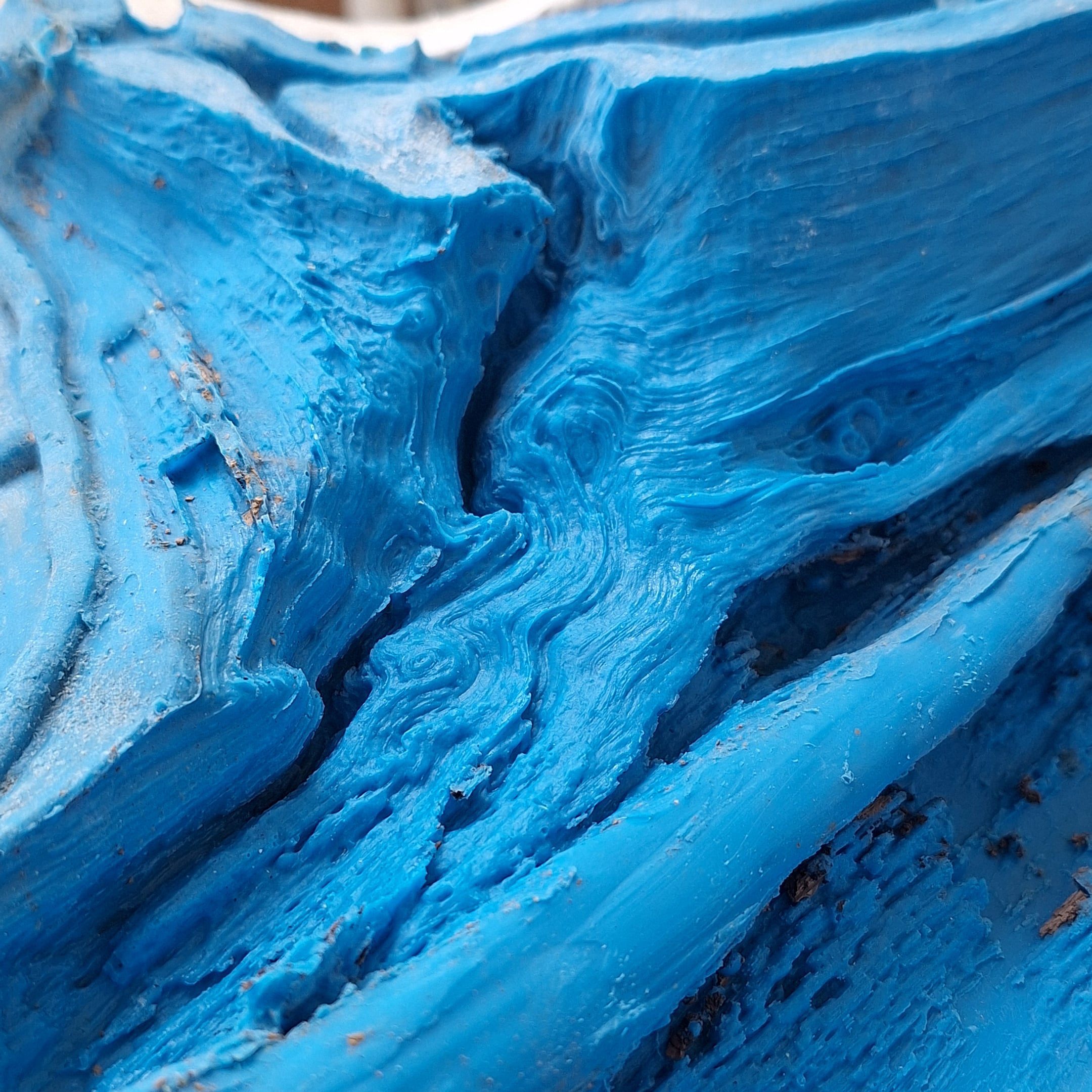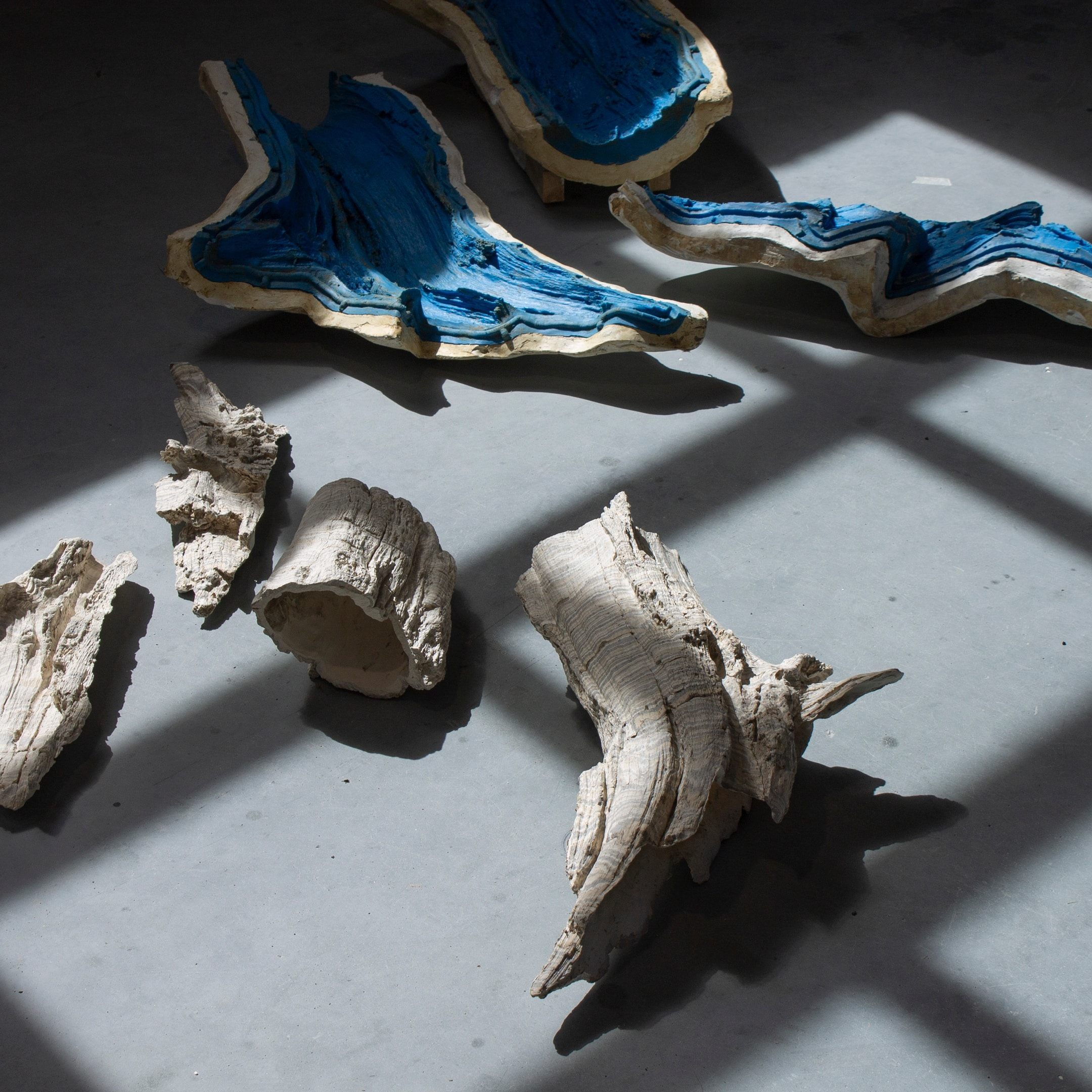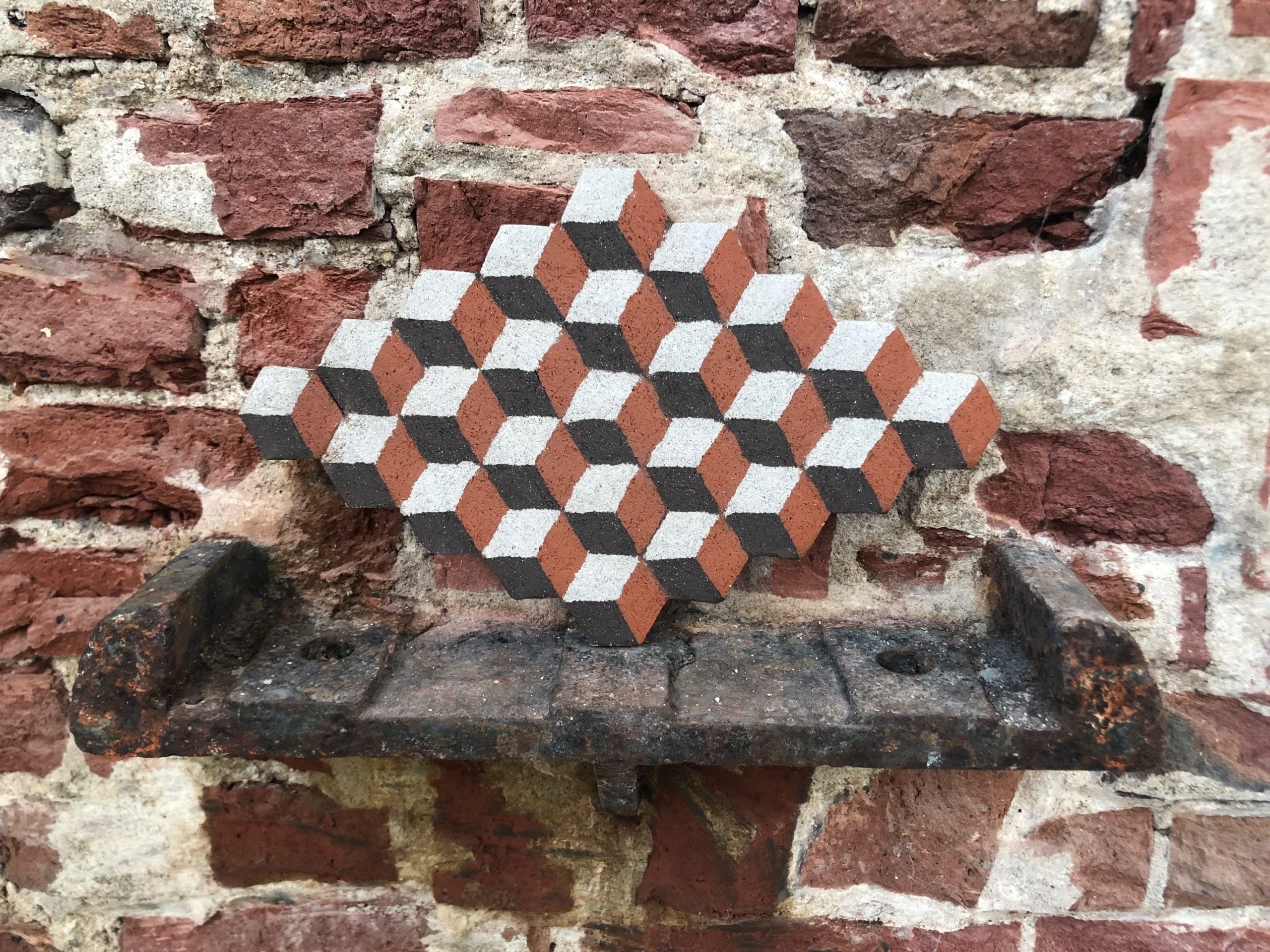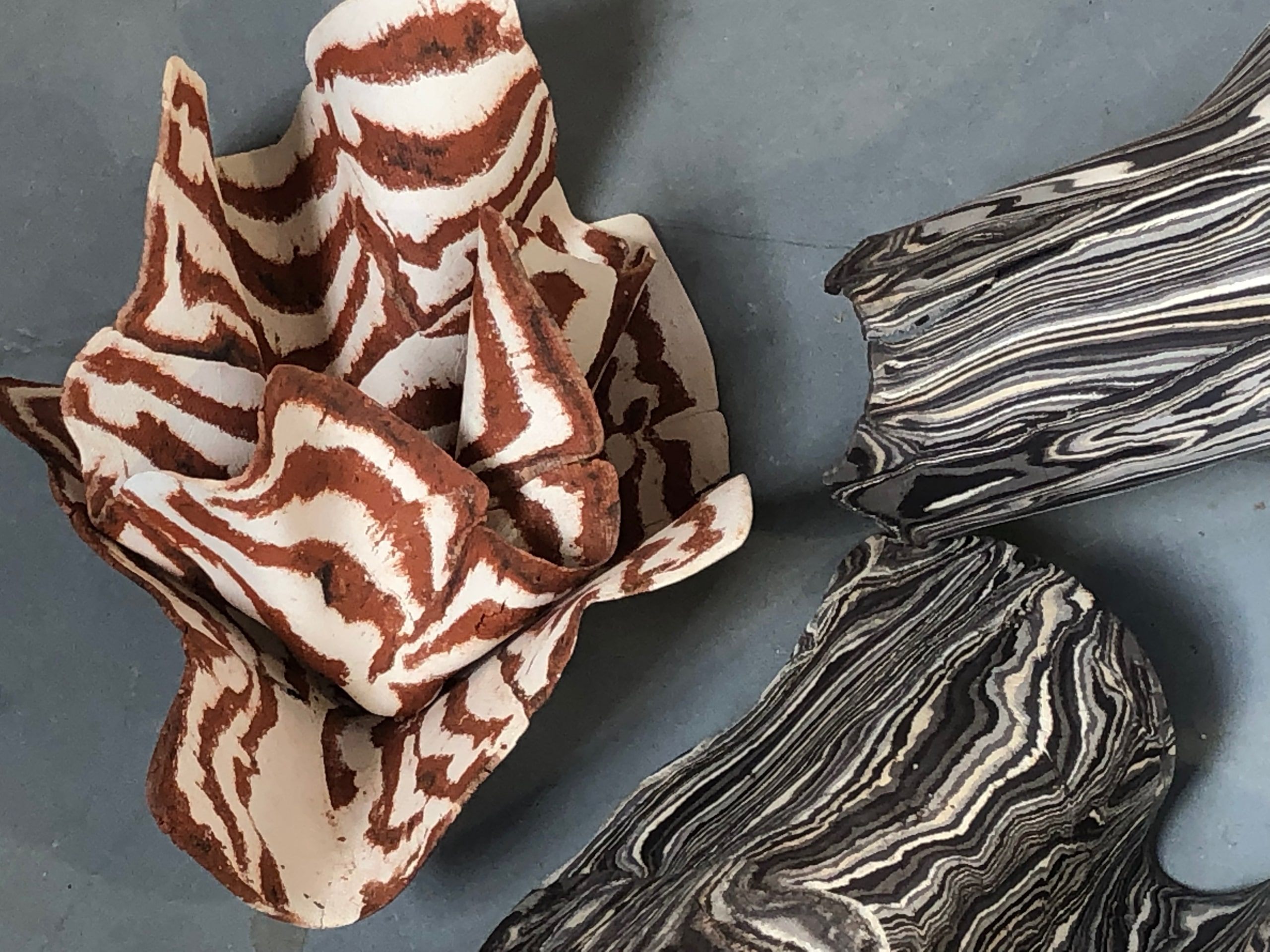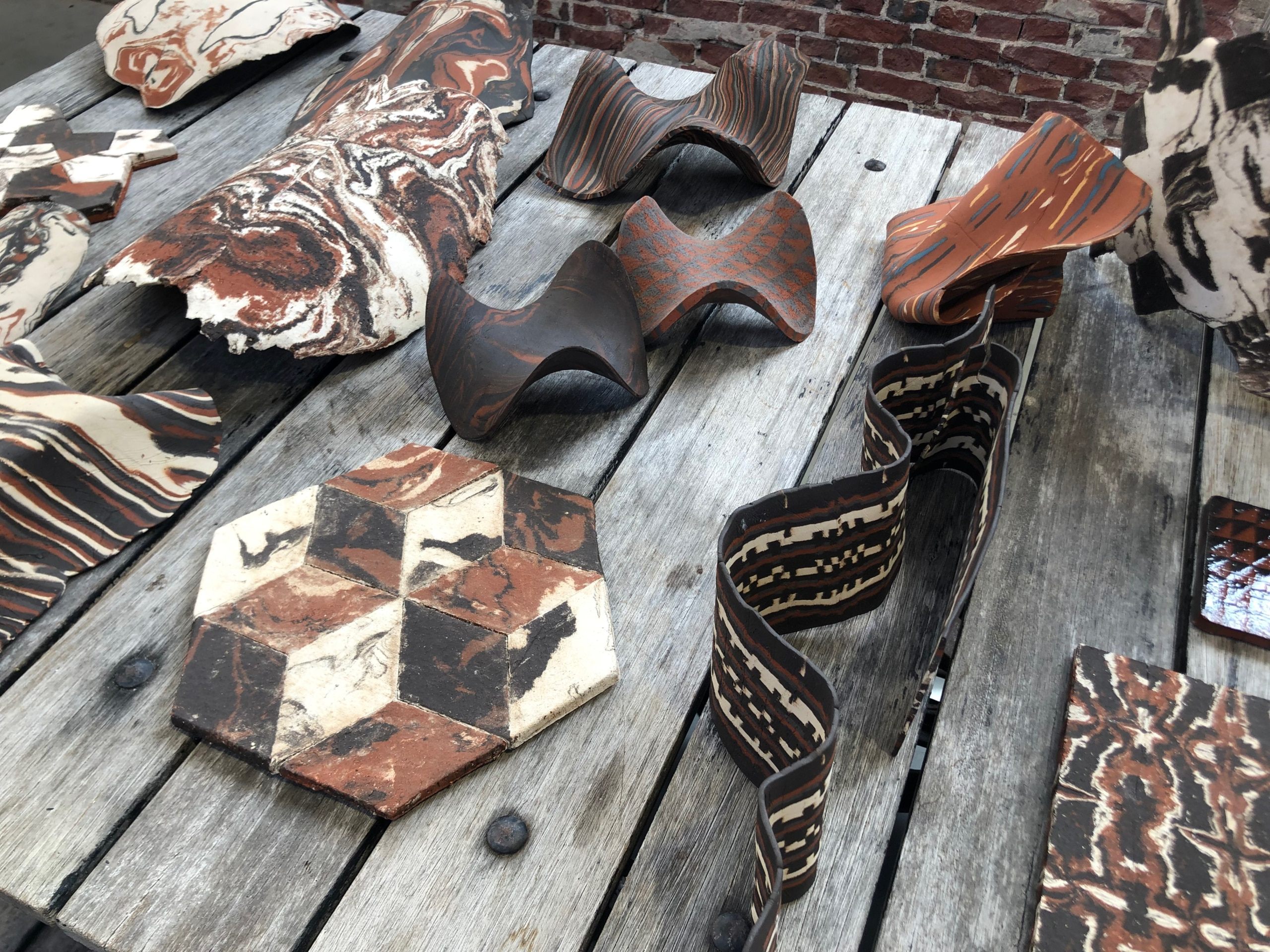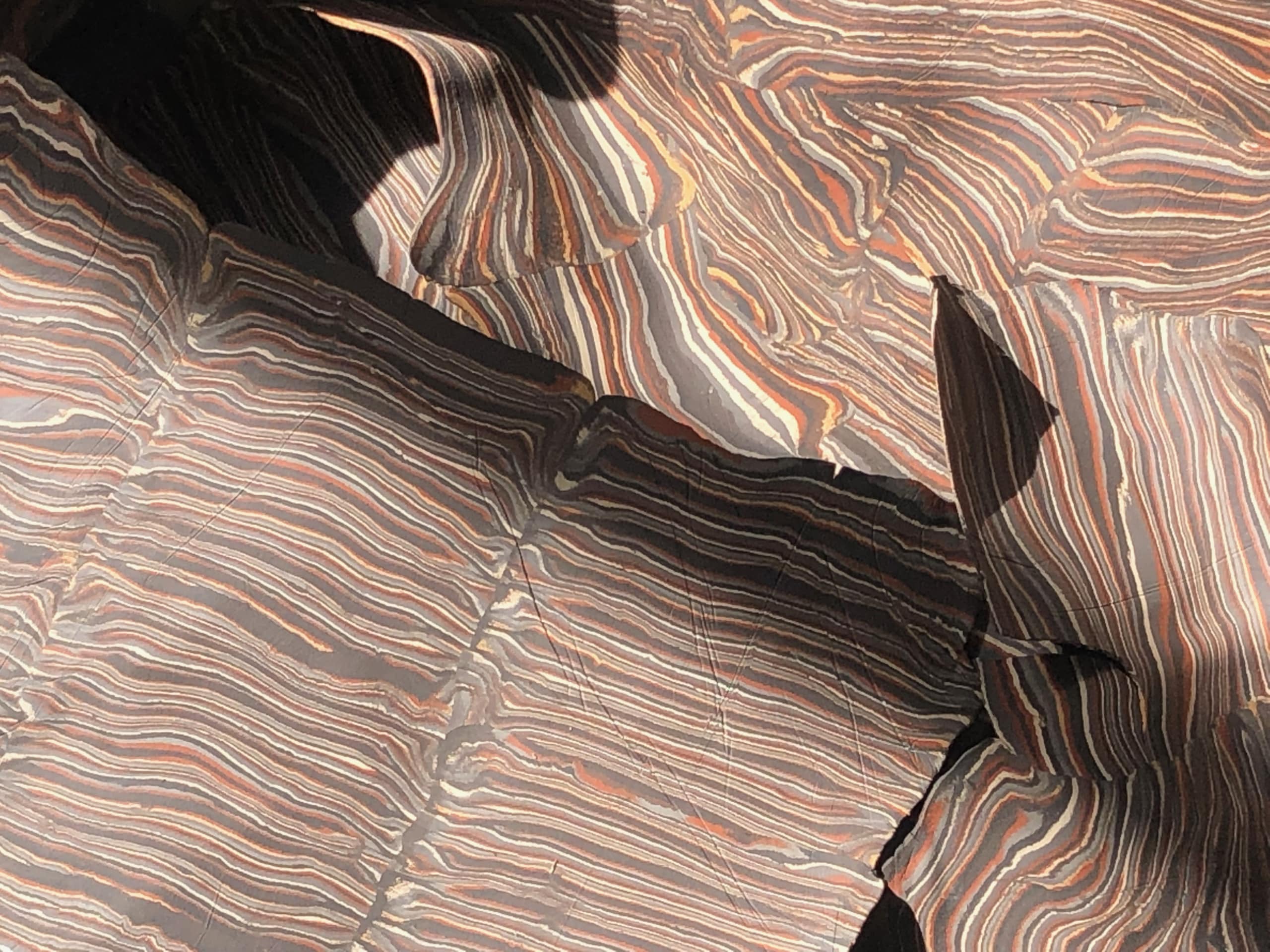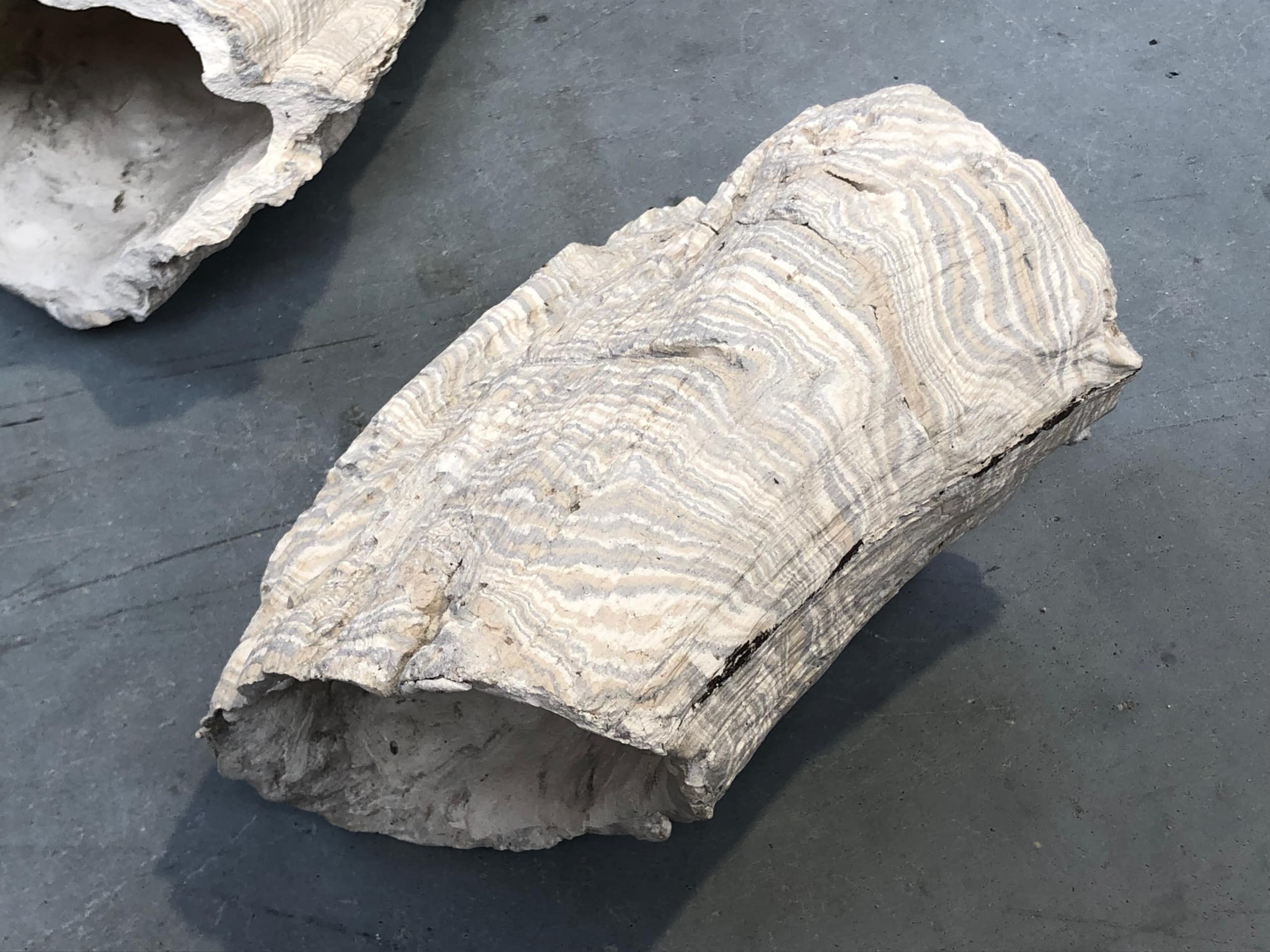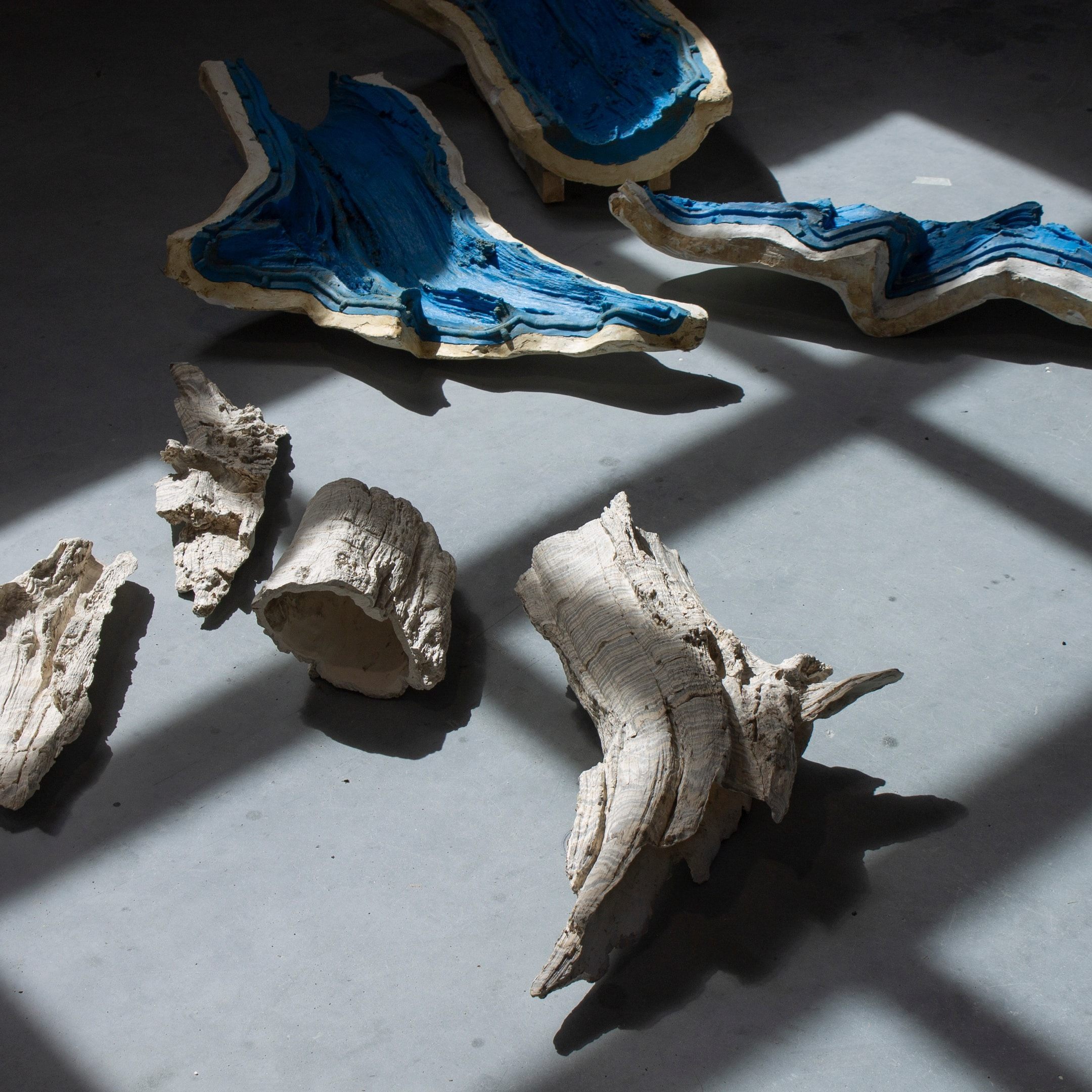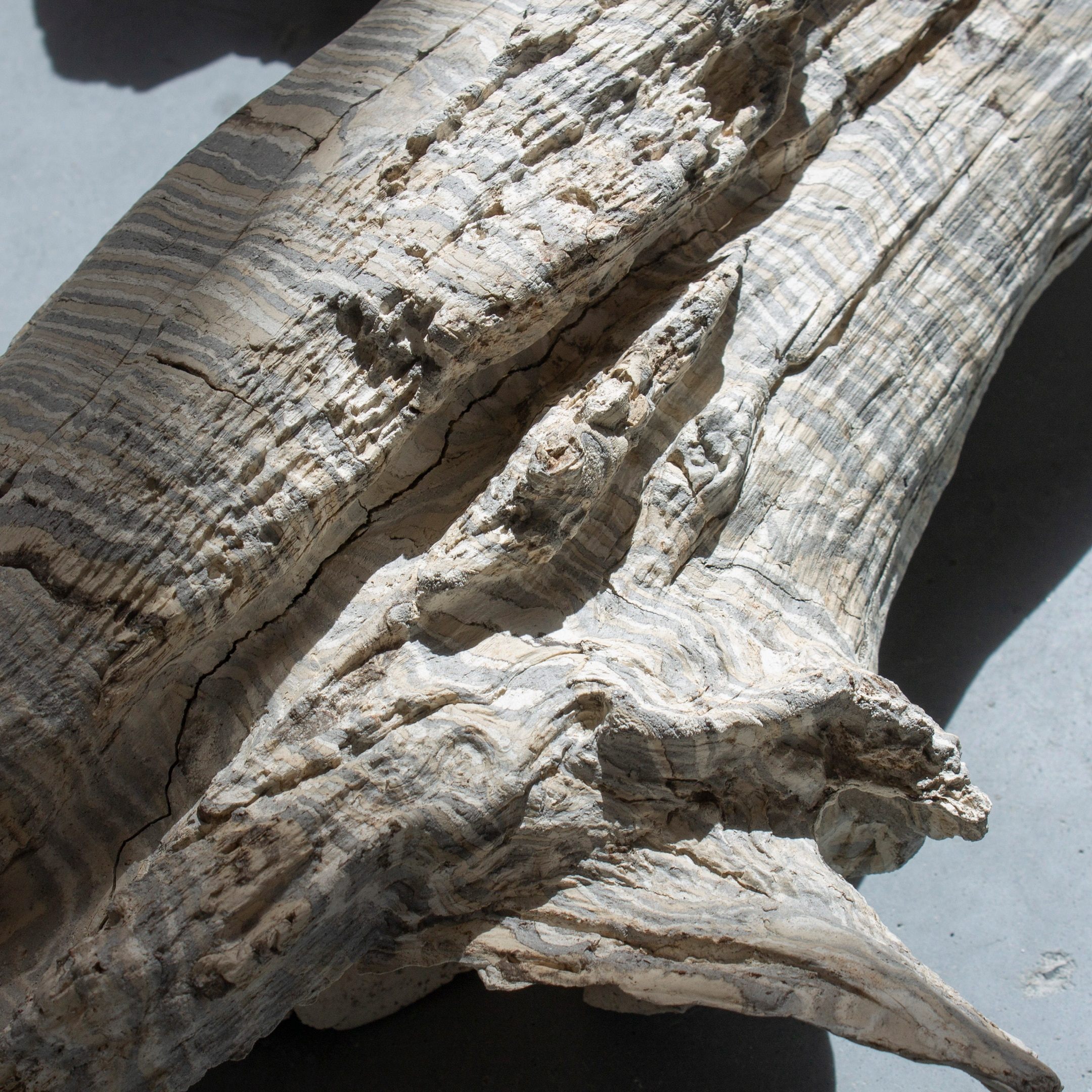Demetris Shammas
| Site | www.shammas.xyz |
| Starting date | 23-01-2025 |
| Ending date | 16-04-2025 |
Demetris Shammas layered different types of clay into blocks, which he sliced into finely veined sheets and then folded and crumbled into delicate forms. Flowers, leaves, odd creatures full of movement, they still evoke a stone-like quality, a distant memory of veined marble tiles that somehow peeled off from the wall to take on a life of their own. The same composite clay body is used to press-mould a hefty log, found in the Oisterwijk forest. It becomes a large piece of burnt or petrified wood, an ancient fossil about to disintegrate into ashes. In addition, Shammas created a floor mosaic with a cubic pattern of red, white and black lozenges. This floor, however, has been lifted and tossed aside, with fragments sagging against a column or a wall, as if space itself has been deformed. There’s an elemental imagination at work here, using deceivingly simple gestures to evoke continuous transformation.
Shammas used the colour wedging, or millefiori, technique to produce intricately folded and draped sculptural pieces. In their raw state, the thin slabs were internally supported by a fine mesh fabric (mosquito netting) and supported in the kiln by beds of sand, strategically placed kiln shelves and furniture. In the mould-making workshop, Shammas made a three-part silicon rubber and plaster mould to capture the detail of his found log which he press-moulded. He did not use any glazes but rather played with temperature ranges to bring out clay body colour ranges.


